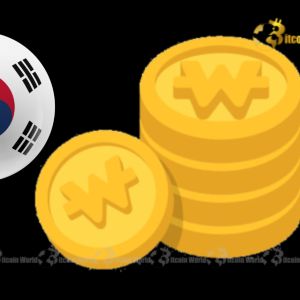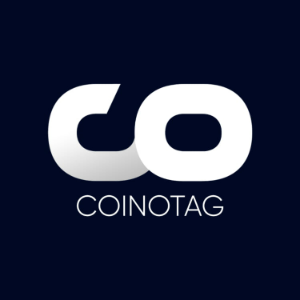South Korea’s Strategic Push: Unveiling Won-Denominated Stablecoin Regulations
7 min read
BitcoinWorld South Korea’s Strategic Push: Unveiling Won-Denominated Stablecoin Regulations The world of digital finance is rapidly evolving, and at its forefront, nations are grappling with how to integrate cryptocurrencies safely and effectively into their traditional financial systems. One of the most significant developments in this space is the emergence of stablecoins – digital assets designed to maintain a stable value, often pegged to fiat currencies like the US Dollar or the Korean Won. Recently, the spotlight has turned to Asia, where South Korea stablecoins are becoming a focal point of regulatory discussions. This proactive approach by one of the world’s leading tech and financial hubs signals a crucial shift in how digital assets will be governed and utilized. Why is South Korea Prioritizing Won-Denominated Stablecoins Now? South Korea has long been a hotbed for cryptocurrency adoption and innovation. However, with this rapid growth comes the inherent need for robust regulatory frameworks to protect investors and maintain financial stability. The recent move by South Korea’s Presidential Policy Planning Committee, in collaboration with financial regulators, to scrutinize the issuance requirements and regulatory framework for won-denominated stablecoins is a testament to this commitment. This isn’t just about controlling a nascent market; it’s about laying down foundational rules for a future where digital currencies play a more integral role in daily transactions and broader economic activities. The urgency stems from several factors: Investor Protection: Unregulated stablecoins can pose significant risks, including volatility and the potential for scams, which can harm retail and institutional investors alike. Financial Stability: Large-scale stablecoin adoption without proper oversight could impact the traditional banking system and the national currency. Combating Illicit Activities: Clear regulations help prevent stablecoins from being used for money laundering, terrorist financing, and other illegal endeavors. Fostering Innovation: A well-defined regulatory environment can actually encourage legitimate innovation by providing clarity and reducing uncertainty for businesses. What Key Issues are the Regulators Addressing in Crypto Regulation South Korea? The core of the discussions between the Presidential Policy Planning Committee and financial regulators revolves around creating a comprehensive framework for crypto regulation South Korea . A critical area of focus, as reported by Maeil Business Newspaper, is the capital requirements for stablecoin issuers. This particular emphasis highlights a significant concern: ensuring that entities issuing won-denominated stablecoins possess sufficient financial backing to honor their obligations and absorb potential shocks. The virtual asset task force, which received an additional briefing from regulators, delved deep into these critical issues. The authorities’ insistence on clearer issuance standards aims to prevent smaller crypto firms that lack robust financial resources from entering the market. This proactive measure is designed to: Key Regulatory Focus Why It Matters Capital Requirements Ensures issuers have enough reserves to maintain the stablecoin’s peg and withstand market volatility, protecting users from potential collapses. Clear Issuance Standards Establishes a baseline for quality and trustworthiness, preventing unqualified entities from launching stablecoins that could destabilize the market. Consumer Protection Guarantees that users’ funds are secure and that mechanisms are in place for dispute resolution and redressal. Anti-Money Laundering (AML) / Counter-Terrorist Financing (CTF) Integrates stablecoins into existing financial crime prevention frameworks, enhancing national security. How Will Stablecoin Issuance Be Affected? The emphasis on stricter capital requirements will undoubtedly shape the landscape of stablecoin issuance in South Korea. While it might initially limit the number of entities able to issue won-denominated stablecoins, this approach is designed to foster a more secure and reliable ecosystem. Larger, more financially stable institutions, potentially including traditional banks or established fintech companies, might be better positioned to meet these stringent requirements. This could lead to a consolidation of the stablecoin market around a few robust players, rather than a proliferation of smaller, potentially riskier projects. For aspiring stablecoin issuers, this means a significant hurdle in terms of financial backing and operational transparency. They will likely need to demonstrate not only substantial capital reserves but also robust compliance frameworks, clear auditing processes, and strong governance structures. This shift is in line with global trends where regulators are increasingly demanding that stablecoins be treated akin to traditional financial instruments, requiring similar levels of oversight and prudential standards. Moreover, the discussions are likely to touch upon the type of assets that can back these stablecoins. Will they be fully backed by fiat currency in segregated accounts? Or will a mix of highly liquid assets be permitted? The answers to these questions will profoundly impact the operational models for future stablecoin projects in South Korea. What Role Does the Virtual Asset Task Force Play in Shaping the Future? The involvement of the virtual asset task force underscores the systematic and detailed approach South Korea is taking towards digital asset regulation. These task forces typically comprise experts from various fields, including finance, technology, law, and economics, working collaboratively to understand complex issues and formulate effective policy recommendations. Their role is crucial in bridging the gap between rapidly evolving blockchain technology and traditional regulatory frameworks. The briefing received by the task force on capital requirements and issuance standards suggests that their findings and recommendations will heavily influence the final regulatory guidelines. This body acts as a crucial interface, translating technical intricacies into policy actionable insights for the government. Their work ensures that regulations are not only comprehensive but also practical and forward-looking, capable of adapting to future innovations in the digital asset space. The task force is likely evaluating various models for stablecoin regulation observed globally, such as the European Union’s Markets in Crypto-Assets (MiCA) regulation, which provides a comprehensive framework for crypto assets, including stablecoins. By learning from international best practices and adapting them to South Korea’s unique market conditions, the task force aims to create a regulatory environment that is both secure and conducive to innovation. Benefits and Challenges of a Regulated Stablecoin Market The move towards a regulated stablecoin market in South Korea presents both significant benefits and notable challenges. Potential Benefits: Enhanced Trust and Adoption: Regulatory clarity and strong oversight will build greater trust among institutional investors and the general public, potentially leading to wider adoption of won-denominated stablecoins for payments, remittances, and decentralized finance (DeFi) applications. Financial Innovation: A clear regulatory sandbox can encourage fintech companies to innovate responsibly, developing new services and products built on stablecoins. Market Stability: By ensuring stablecoins are adequately backed and managed, the risk of ‘runs’ or de-pegging events that could ripple through the broader financial system is significantly reduced. Global Competitiveness: South Korea can position itself as a leader in responsible digital asset innovation, attracting international businesses and investment. Potential Challenges: Regulatory Overreach: Overly stringent regulations could stifle innovation and drive businesses to less regulated jurisdictions. Implementation Complexity: Developing and enforcing a comprehensive regulatory framework for digital assets is a complex undertaking, requiring significant resources and expertise. Technological Pace: Regulations must be flexible enough to keep pace with rapid technological advancements in the blockchain space. International Coordination: Stablecoins are global by nature; lack of international regulatory harmonization could lead to arbitrage opportunities or fragmented markets. What Does This Mean for the Future of South Korea’s Digital Economy? South Korea’s proactive stance on regulating won-denominated stablecoins signals a clear intent to integrate digital assets into its financial ecosystem in a controlled and secure manner. This isn’t just about stablecoins; it’s a broader statement about the nation’s vision for its digital economy. By establishing clear rules, South Korea aims to harness the transformative potential of blockchain technology while mitigating its inherent risks. For businesses operating in the crypto space, this means a shift towards greater compliance and institutionalization. For consumers, it promises a safer environment for engaging with digital currencies. As these regulations take shape, we can expect to see a more mature and resilient digital asset market emerge in South Korea, potentially setting a precedent for other nations grappling with similar challenges. The journey towards fully regulated stablecoins is complex, but South Korea’s commitment through its Presidential Policy Planning Committee and virtual asset task force demonstrates a determined effort to build a robust and trustworthy digital financial future. Conclusion: A New Era for South Korea Stablecoins South Korea’s diligent assessment of issuance conditions for won-denominated stablecoins marks a pivotal moment in the nation’s digital finance journey. The focus on robust capital requirements and clear issuance standards, spearheaded by the Presidential Policy Planning Committee and the dedicated virtual asset task force, underscores a commitment to fostering a secure, stable, and innovative crypto ecosystem. This strategic move aims to protect investors, ensure financial stability, and pave the way for legitimate businesses to thrive in the burgeoning digital asset space. As South Korea continues to refine its crypto regulation South Korea , it is poised to become a global leader in responsible digital asset integration, setting a benchmark for the future of finance. To learn more about the latest crypto market trends, explore our article on key developments shaping stablecoin issuance and institutional adoption. This post South Korea’s Strategic Push: Unveiling Won-Denominated Stablecoin Regulations first appeared on BitcoinWorld and is written by Editorial Team

Source: Bitcoin World



